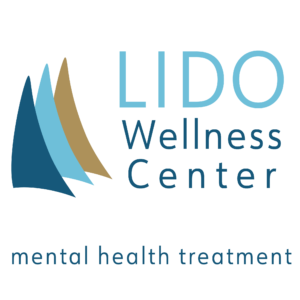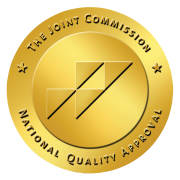Top 8 Somatic Experiencing Exercises
Let’s chat about something quite extraordinary—somatic experiencing exercises. It’s a form of therapy that can seem almost mysterious in its simplicity and profound in its effects. So, what is Somatic Experiencing, and why is it such a powerful tool in the world of mental health and emotional regulation?
What Is Somatic Experiencing?
Developed by Dr. Peter Levine, Somatic Experiencing (SE) is a body-oriented approach to healing trauma and other stress disorders. It’s based on the observation that wild prey animals, though regularly threatened, are rarely traumatized.
Unlike humans, animals in the wild use innate mechanisms to regulate and discharge the high levels of energy arousal associated with survival behaviors. SE helps people tap into these natural rhythms to release traumatic shock, which is key to transforming PTSD and the wounds of emotional and early developmental attachment trauma.
Why and How Do Somatic Experiencing Exercises Help?
Somatic Experiencing helps by:
- Restoring Self-Regulation: Helps to reset the nervous system, promoting a return to a state of balance.
- Releasing Stored Energy: Facilitates the release of energy and tension stored in the body during a traumatic event.
- Reinforcing Resilience: Builds resilience to stress by enhancing the body’s capacity to handle and recover from stress.
- Fostering Awareness: Increases body awareness, which can help identify and prevent the physical onset of stress and trauma.
What Does It Help?
- Trauma Recovery: Particularly effective in healing the symptoms of PTSD and other trauma-related health problems.
- Stress and Anxiety: Useful for managing and alleviating symptoms of anxiety and chronic stress.
- Physical Symptoms: Addresses physical symptoms associated with trauma such as chronic pain, digestive issues, and insomnia.
- Emotional Regulation: Assists in better emotional regulation and the development of healthier coping mechanisms.
The Top 8 Somatic Experiencing Exercises
Now, let’s explore some of the best Somatic Experiencing exercises that can help create a sense of calm and stability in your body. These are simple yet powerful techniques to start incorporating into your daily routine (and below we give you some steps to try on your own):
- Grounding: Feel the floor beneath your feet or your back against a chair. Notice the support of the ground. This connection can help bring you back to the present moment.
- Resourcing: Identify resources—people, places, or memories that evoke feelings of peace and safety. Imagining these can calm your nervous system.
- Orientation: Slowly look around your environment, noticing colors, shapes, and objects. This helps reassure your nervous system that the environment is safe.
- Pendulation: Notice sensations in your body that feel comfortable, then slowly shift your attention to areas of discomfort. Pendulate back and forth to gradually reduce intensity of distress.
- Tracking: Pay attention to bodily sensations and changes. For example, you might notice warmth in your hands or a tingling in your toes. This awareness helps you stay connected to the present.
- Titration: Very gently expose yourself to distressing sensations or emotions in small doses—only as much as you can handle without becoming overwhelmed.
- Completion of Motor Actions: Often, traumatic responses are physical reactions frozen in time. Through SE, you might be guided to slowly complete a previously interrupted defensive motor response, like pushing away or running.
- Somatic Narration: As you move through exercises, narrate what’s happening in your body. Speaking it aloud can help integrate the experience.
Somatic Experience Exercise: Step-by-Step
Ready to Try It?
Preparation:
Find a quiet, comfortable space where you can sit or stand without interruption. If you’re sitting, choose a chair where your feet can rest flat on the floor, and your back can lean slightly against the back of the chair.
-
Begin by Taking a Deep Breath:
- Inhale deeply through your nose, allowing your belly to expand as you fill your lungs with air.
- Exhale slowly through your mouth, letting out all the air and any tension you might be holding.
- Repeat this breathing three times, each time noticing the air moving in and out of your body.
-
Feel Your Feet:
- Place your feet flat on the floor. Feel the soles of your feet touching the ground. Notice the pressure of the floor beneath you. Is it cold or warm? Hard or soft?
- Imagine roots growing from the soles of your feet deep into the earth, anchoring you securely to this spot.
-
Notice Your Body’s Contact Points:
- Feel the weight of your body in the chair. Notice where your body touches the chair—the back of your thighs, your back, perhaps your arms.
- Pay attention to these points of contact. How does the support of the chair feel against your body?
-
Observe Your Surroundings:
- Without moving your head, let your eyes wander around the room. Notice objects, colors, shapes, and textures.
- Acknowledge these details quietly in your mind, letting each observation ground you more deeply into the present.
-
Return to Your Breath:
- Bring your focus back to your breathing. Feel each inhale and exhale as a grounding force.
- With each breath, imagine drawing strength from the earth through your feet and spreading calm throughout your body.
-
Check in With Your Body:
- Notice any changes in your body or emotions. Do you feel calmer, more present?
- Acknowledge any sensations or feelings that have arisen without judgment.
-
Close the Exercise:
- Take one more deep, grounding breath. As you exhale, thank yourself for taking this time to connect with your present experience.
- When you feel ready, gently wiggle your fingers and toes, and slowly open your eyes if they were closed.
Each Step a Gentle Forward
These exercises might feel small, but each step is a profound leap forward in healing. The beauty of Somatic Experiencing lies in its ability to make vast changes through minute, almost imperceptible movements and moments. Remember, the key is patience and gentle attention—your body knows what it needs, and with Somatic Experiencing, you’re just learning to listen again.
At Lido Wellness our team is experienced at brining SE into treatment when it proves useful or, along with the patient, we believe it could be effective. If you want to know more about how we use somatic experiencing exercises in our mental health program, call us today: 949-541-8466.



